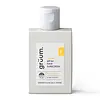What's inside
What's inside
 Key Ingredients
Key Ingredients

 Benefits
Benefits

 Concerns
Concerns

 Ingredients Side-by-side
Ingredients Side-by-side

Water
Skin ConditioningC12-15 Alkyl Benzoate
AntimicrobialEthylhexyl Stearate
EmollientOctocrylene
UV AbsorberButyl Methoxydibenzoylmethane
UV AbsorberGlycerin
HumectantEthylhexyl Salicylate
UV AbsorberPotassium Cetyl Phosphate
EmulsifyingCetearyl Alcohol
EmollientTitanium Dioxide
Cosmetic ColorantPhenylbenzimidazole Sulfonic Acid
UV AbsorberGlyceryl Stearate
EmollientTris-Biphenyl Triazine
UV AbsorberEthylhexyl Triazone
UV AbsorberBis-Ethylhexyloxyphenol Methoxyphenyl Triazine
Skin ConditioningAminomethyl Propanol
BufferingAcrylates/C10-30 Alkyl Acrylate Crosspolymer
Emulsion StabilisingPhenoxyethanol
PreservativeAlumina
AbrasivePiroctone Olamine
PreservativeDecyl Glucoside
CleansingDisodium Phosphate
BufferingSimethicone
EmollientDiethylhexyl Sodium Sulfosuccinate
CleansingXanthan Gum
EmulsifyingButylene Glycol
HumectantCaprylyl Glycol
EmollientPropylene Glycol
HumectantSilver Chloride
PreservativeWater, C12-15 Alkyl Benzoate, Ethylhexyl Stearate, Octocrylene, Butyl Methoxydibenzoylmethane, Glycerin, Ethylhexyl Salicylate, Potassium Cetyl Phosphate, Cetearyl Alcohol, Titanium Dioxide, Phenylbenzimidazole Sulfonic Acid, Glyceryl Stearate, Tris-Biphenyl Triazine, Ethylhexyl Triazone, Bis-Ethylhexyloxyphenol Methoxyphenyl Triazine, Aminomethyl Propanol, Acrylates/C10-30 Alkyl Acrylate Crosspolymer, Phenoxyethanol, Alumina, Piroctone Olamine, Decyl Glucoside, Disodium Phosphate, Simethicone, Diethylhexyl Sodium Sulfosuccinate, Xanthan Gum, Butylene Glycol, Caprylyl Glycol, Propylene Glycol, Silver Chloride
Water
Skin ConditioningC12-15 Alkyl Benzoate
AntimicrobialVitis Vinifera Oil
PerfumingEthyl Macadamiate
Skin ConditioningPotassium Cetyl Phosphate
EmulsifyingHydrogenated Palm Glycerides
EmollientButyl Salicylate
PerfumingCamellia Sinensis Leaf Extract
AntimicrobialGlycerin
HumectantGlycine Soja Seed Extract
Skin ConditioningBrassica Oleracea Italica Seed Oil
EmollientCapryloyl Glycerin/Sebacic Acid Copolymer
Skin ConditioningCetearyl Alcohol
EmollientPhenoxyethanol
PreservativeEthylhexylglycerin
Skin ConditioningMicrocrystalline Cellulose
AbsorbentCellulose Gum
Emulsion StabilisingPolysorbate 20
EmulsifyingXanthan Gum
EmulsifyingSodium Stearoyl Glutamate
CleansingStearic Acid
CleansingPolyhydroxystearic Acid
EmulsifyingMagnesium Aluminum Silicate
AbsorbentAminomethyl Propanol
BufferingEctoin
Skin ConditioningDisodium EDTA
Citric Acid
BufferingWater, C12-15 Alkyl Benzoate, Vitis Vinifera Oil, Ethyl Macadamiate, Potassium Cetyl Phosphate, Hydrogenated Palm Glycerides, Butyl Salicylate, Camellia Sinensis Leaf Extract, Glycerin, Glycine Soja Seed Extract, Brassica Oleracea Italica Seed Oil, Capryloyl Glycerin/Sebacic Acid Copolymer, Cetearyl Alcohol, Phenoxyethanol, Ethylhexylglycerin, Microcrystalline Cellulose, Cellulose Gum, Polysorbate 20, Xanthan Gum, Sodium Stearoyl Glutamate, Stearic Acid, Polyhydroxystearic Acid, Magnesium Aluminum Silicate, Aminomethyl Propanol, Ectoin, Disodium EDTA, Citric Acid
Ingredients Explained
These ingredients are found in both products.
Ingredients higher up in an ingredient list are typically present in a larger amount.
Aminomethyl Propanol is used to adjust the pH of products. It is also used as a base to create other organic compounds. Having a balanced pH is important for protecting your skin.
Aminomethyl propanol is safe to use in cosmetics up to 1%. It is soluble in water.
C12-15 Alkyl Benzoate is made up of Benzoic Acid and long chain alcohols. It has a low molecular weight.
C12-15 Alkyl Benzoate is an emollient and texture enhancer. Due to its solubility, it is often used in sunscreens to help evenly distribute active ingredients.
As an emollient, C12-15 Alkyl Benzoate helps soften and hydrate your skin. Emollients create a film on your skin that traps moisture within.
This ingredient has been reported to cause eye irritation.
Learn more about C12-15 Alkyl BenzoateCetearyl alcohol is a mixture of two fatty alcohols: cetyl alcohol and stearyl alcohol. It is mainly used as an emulsifier. Emulsifiers help prevent the separation of oils and products. Due to its composition, it can also be used to thicken a product or help create foam.
Cetearyl alcohol is an emollient. Emollients help soothe and hydrate the skin by trapping moisture.
Studies show Cetearyl alcohol is non-toxic and non-irritating. The FDA allows products labeled "alcohol-free" to have fatty alcohols.
This ingredient is usually derived from plant oils such as palm, vegetable, or coconut oils. There is debate on whether this ingredient will cause acne.
Due to the fatty acid base, this ingredient may not be Malassezia folliculitis safe.
Learn more about Cetearyl AlcoholGlycerin is already naturally found in your skin. It helps moisturize and protect your skin.
A study from 2016 found glycerin to be more effective as a humectant than AHAs and hyaluronic acid.
As a humectant, it helps the skin stay hydrated by pulling moisture to your skin. The low molecular weight of glycerin allows it to pull moisture into the deeper layers of your skin.
Hydrated skin improves your skin barrier; Your skin barrier helps protect against irritants and bacteria.
Glycerin has also been found to have antimicrobial and antiviral properties. Due to these properties, glycerin is often used in wound and burn treatments.
In cosmetics, glycerin is usually derived from plants such as soybean or palm. However, it can also be sourced from animals, such as tallow or animal fat.
This ingredient is organic, colorless, odorless, and non-toxic.
Glycerin is the name for this ingredient in American English. British English uses Glycerol/Glycerine.
Learn more about GlycerinPhenoxyethanol is a preservative that has germicide, antimicrobial, and aromatic properties. Studies show that phenoxyethanol can prevent microbial growth. By itself, it has a scent that is similar to that of a rose.
It's often used in formulations along with Caprylyl Glycol to preserve the shelf life of products.
Potassium Cetyl Phosphate is the potassium salt of a mixture. This mixture consists of the esters from phosphoricacid and cetyl alcohol.
Potassium Cetyl Phosphate is an emulsifier and cleansing agent. Emulsifiers help stabilize a product. It does this by preventing certain ingredients from separating.
As a cleansing agent, Potassium Cetyl Phosphate helps gather oils, dirts, and pollutants from your skin. This makes it easier to rinse them away with water.
Learn more about Potassium Cetyl PhosphateWater. It's the most common cosmetic ingredient of all. You'll usually see it at the top of ingredient lists, meaning that it makes up the largest part of the product.
So why is it so popular? Water most often acts as a solvent - this means that it helps dissolve other ingredients into the formulation.
You'll also recognize water as that liquid we all need to stay alive. If you see this, drink a glass of water. Stay hydrated!
Learn more about WaterXanthan gum is used as a stabilizer and thickener within cosmetic products. It helps give products a sticky, thick feeling - preventing them from being too runny.
On the technical side of things, xanthan gum is a polysaccharide - a combination consisting of multiple sugar molecules bonded together.
Xanthan gum is a pretty common and great ingredient. It is a natural, non-toxic, non-irritating ingredient that is also commonly used in food products.
Learn more about Xanthan Gum